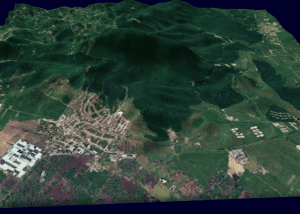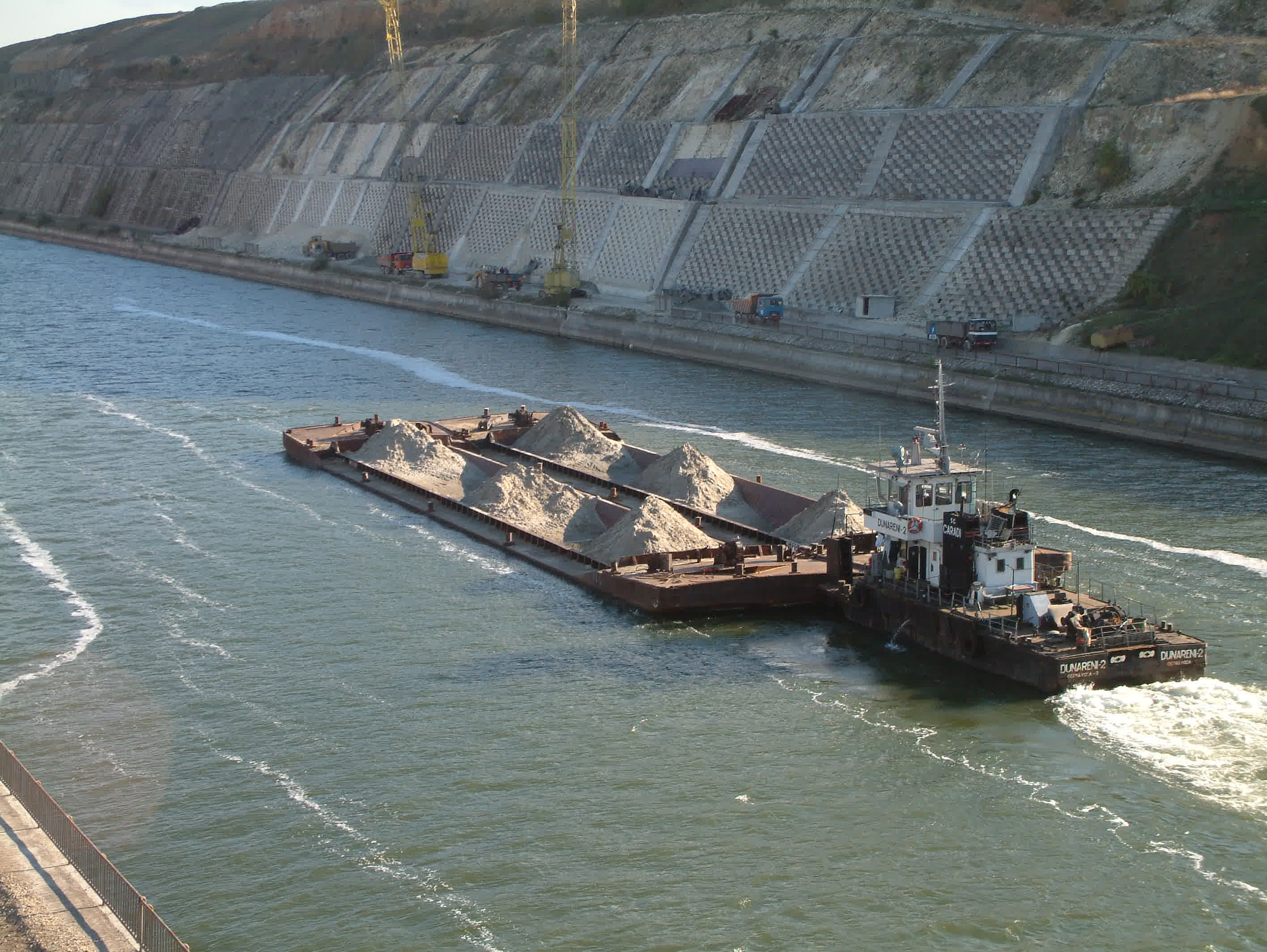|
Brașov Prison
Brașov Prison was a prison located in Brașov, Romania. The building, like the nearby Appeals Court, dates to 1902, during the period of Austro-Hungarian rule. It is on three levels, with one wing containing the cells and the other, perpendicular and asymmetrical, originally housing the prison hospital. Prior to 1945, members of the banned Romanian Communist Party were detained there, including Nicolae Ceaușescu. Beginning that year, after the establishment of a communist-led government, a number of buildings in the city were used as centers for interrogation and torture, including one operated by the NKVD. The prison housed overflow detainees under investigation by the secret police, which became the Securitate following the establishment of a communist regime at the end of 1947. The principal targets were the political and cultural elite of the Burzenland and adjacent areas, mainly sent to the Danube–Black Sea Canal once their cases were resolved.Muraru, pp. 161-64 Condition ... [...More Info...] [...Related Items...] OR: [Wikipedia] [Google] [Baidu] |
Brașov
Brașov (, , ; , also ''Brasau''; ; ; Transylvanian Saxon dialect, Transylvanian Saxon: ''Kruhnen'') is a city in Transylvania, Romania and the county seat (i.e. administrative centre) of Brașov County. According to the 2021 Romanian census, 2021 census, with 237,589 inhabitants, Brașov is the Cities in Romania, 6th most populous city in Romania. The Brașov metropolitan area, metropolitan area was home to 371,802 residents. Brașov is located in the central part of the country, about north of Bucharest and from the Black Sea. It is surrounded by the Southern Carpathians and is part of the historical region of Transylvania. Historically, the city was the centre of the Burzenland (), once dominated by the Transylvanian Saxons (), and a significant commercial hub on the trade roads between Austria (then Archduchy of Austria, within the Habsburg monarchy, and subsequently Austrian Empire) and Turkey (then Ottoman Empire). It is also where the Deșteaptă-te, române!, nationa ... [...More Info...] [...Related Items...] OR: [Wikipedia] [Google] [Baidu] |
Mămăligă
Mămăligă (;) is a polenta-like dish made out of yellow maize flour, traditional in Romania, Moldova, south-west regions of Ukraine and among Poles in Ukraine (''mamałyga''), Hungary (''puliszka''), the Black Sea regions of Georgia (country), Georgia and Turkey, and Thessaly and Phthiotis, as well as in Bulgaria (''kačamak'') and in Greece. It is also eaten in Italy, Switzerland, Southern France, Slovenia, Croatia, Brazil, often with the name ''polenta''. History Historically a peasant food, it was often used as a substitute for bread or even as a staple food in the poor rural areas. However, in the last decades it has emerged as an upscale dish available in the finest restaurants. Maize was consumed by Romani people, Romani slaves in Wallachia and Moldavia, as well as Muslims, Muslim slaves, who were Prisoner of war, prisoners of war. Roman influence Historically, porridge is the oldest form of consumption of grains in the whole of humanity, long before the appearanc ... [...More Info...] [...Related Items...] OR: [Wikipedia] [Google] [Baidu] |
Buildings And Structures In Brașov
A building or edifice is an enclosed structure with a roof, walls and windows, usually standing permanently in one place, such as a house or factory. Buildings come in a variety of sizes, shapes, and functions, and have been adapted throughout history for numerous factors, from building materials available, to weather conditions, land prices, ground conditions, specific uses, prestige, and aesthetic reasons. To better understand the concept, see ''Nonbuilding structure'' for contrast. Buildings serve several societal needs – occupancy, primarily as shelter from weather, security, living space, privacy, to store belongings, and to comfortably live and work. A building as a shelter represents a physical separation of the human habitat (a place of comfort and safety) from the ''outside'' (a place that may be harsh and harmful at times). buildings have been objects or canvasses of much artistic expression. In recent years, interest in sustainable planning and building practi ... [...More Info...] [...Related Items...] OR: [Wikipedia] [Google] [Baidu] |
Defunct Prisons In Romania
{{Disambiguation ...
Defunct may refer to: * ''Defunct'' (video game), 2014 * Zombie process or defunct process, in Unix-like operating systems See also * * :Former entities * End-of-life product * Obsolescence Obsolescence is the process of becoming antiquated, out of date, old-fashioned, no longer in general use, or no longer useful, or the condition of being in such a state. When used in a biological sense, it means imperfect or rudimentary when comp ... [...More Info...] [...Related Items...] OR: [Wikipedia] [Google] [Baidu] |
Polirom
Polirom or Editura Polirom ("Polirom" Publishing House) is a Romanian publishing house with a tradition of publishing classics of international literature and also various titles in the fields of social sciences, such as psychology, sociology, and anthropology. The company was founded in February 1995 in Iași. The first title published by Polirom was ''For Europe'', by Adrian Marino. As of 2023, Polirom has published about 8,300 titles, in over 60 series and collections, amounting to 13 million copies in all. The editorial profile includes both fiction (35%) and nonfiction (65%). In 2008, the company published 700 new titles, in a range of over 70 collections ranging from self-help to modern classics such as Robert Musil's ''The Man Without Qualities'' and from textbooks to "chick lit". [...More Info...] [...Related Items...] OR: [Wikipedia] [Google] [Baidu] |
Codlea
Codlea (; ; Transylvanian Saxon dialect: ''Zäöeden''; ) is a city in Brașov County, Transylvania, Romania. Name The Romanian name "Codlea" could be a derivation from the Latin , a diminutive of Latin (edge, rearward); or it could be a derivation from the Slavic ''kotlík'' ("kettle"), as the ''Măgura Codlei'' (in this reading: "Kettle Hill") looks like a kettle. In Romanian, ''măgură'' means "large hill, mound, forest located on a high place". The hill also provides the Hungarian name of the city, ''Feketehegy'', "Black Hill". The German name's origin is unknown, but there is a theory that it was derived from ''Zeidler'', an antiquated word for "beekeeper". in Wörterbuch (online). Accessed 24 Oct 2023. H ...
|
Re-education In Communist Romania
Re-education in Romanian communist prisons was a series of processes initiated after the establishment of the communist regime at the end of World War II that targeted people who were considered hostile to the Romanian Communist Party, primarily members of the fascist Iron Guard, as well as other political prisoners, both from established prisons and from labor camps. The purpose of the process was the indoctrination of the hostile elements with the Marxist–Leninist ideology, that would lead to the crushing of any active or passive resistance movement. Reeducation was either non-violent – e.g., via communist propaganda – or violent, as it was done at the Pitești and Gherla prisons. Theoretical background Philosopher Mircea Stănescu claimed that the theoretical foundation for the communist version of the reeducation process was provided by the principles defined by Anton Semioniovici Makarenko, a Russian educator born in Ukraine in 1888. This claim was disputed by histor ... [...More Info...] [...Related Items...] OR: [Wikipedia] [Google] [Baidu] |
Pitești Prison
Pitești Prison () was a penal facility in Pitești, Romania, best remembered for the reeducation experiment (also known as ''Experimentul Pitești'' – the "Pitești Experiment" or ''Fenomenul Pitești'' – the "Pitești Phenomenon") which was carried out between December 1949 and September 1951, during Communist party rule. The experiment, which was implemented by a group of prisoners under the guidance of the prison administration, was designed as an attempt to violently "reeducate" the mostly young political prisoners, who were primarily supporters of the fascist Iron Guard, as well as Zionist members of the Romanian Jewish community. The Romanian People's Republic adhered to a doctrine of state atheism and the inmates who were held at Pitești Prison included religious believers, such as Christian seminarians. According to writer , the experiment's goal was to re-educate prisoners to discard past religious convictions and ideology, and, eventually, to alter their personal ... [...More Info...] [...Related Items...] OR: [Wikipedia] [Google] [Baidu] |
Danube–Black Sea Canal
The Danube–Black Sea Canal () is a navigable canal in Romania, which runs from Cernavodă on the Danube river, via two branches, to Constanța and Năvodari on the Black Sea. Administered from Agigea, it is an important part of the waterway link between the North Sea and the Black Sea via the Rhine–Main–Danube Canal. The main branch of the canal, with a length of , which connects the Port of Cernavodă with the Port of Constanța, was built in 1976–1984, while the northern branch, known as the Poarta Albă–Midia Năvodari Canal, with a length of , connecting Poarta Albă and the Port of Midia, was built between 1983 and 1987. Although the idea of building a navigable canal between the Danube and the Black Sea is old, the first concrete attempt was made between 1949 and 1953, when the Socialist Republic of Romania, communist authorities of the time used this opportunity to eliminate political opponents, so the canal became notorious as the site of labor camps, when at an ... [...More Info...] [...Related Items...] OR: [Wikipedia] [Google] [Baidu] |
Austro-Hungarian
Austria-Hungary, also referred to as the Austro-Hungarian Empire, the Dual Monarchy or the Habsburg Monarchy, was a multi-national constitutional monarchy in Central Europe between 1867 and 1918. A military and diplomatic alliance, it consisted of two sovereign states with a single monarch who was titled both the Emperor of Austria and the King of Hungary. Austria-Hungary constituted the last phase in the constitutional evolution of the Habsburg monarchy: it was formed with the Austro-Hungarian Compromise of 1867 in the aftermath of the Austro-Prussian War, following wars of independence by Hungary in opposition to Habsburg rule. It was dissolved shortly after Hungary terminated the union with Austria in 1918 at the end of World War 1. One of Europe's major powers, Austria-Hungary was geographically the second-largest country in Europe (after Russia) and the third-most populous (after Russia and the German Empire), while being among the 10 most populous countries worldwide. ... [...More Info...] [...Related Items...] OR: [Wikipedia] [Google] [Baidu] |
Communist Romania
The Socialist Republic of Romania (, RSR) was a Marxism–Leninism, Marxist–Leninist One-party state, one-party socialist state that existed officially in Romania from 1947 to 1989 (see Revolutions of 1989). From 1947 to 1965, the state was known as the Romanian People's Republic (, RPR). The country was an Eastern Bloc state and a member of the Warsaw Pact with a dominant role for the Romanian Communist Party enshrined in :Template:RomanianConstitutions, its constitutions. Geographically, RSR was bordered by the Black Sea to the east, the Soviet Union (via the Ukrainian Soviet Socialist Republic, Ukrainian and Moldavian Soviet Socialist Republic, Moldavian SSRs) to the north and east, Hungarian People's Republic, Hungary and Socialist Federal Republic of Yugoslavia, Yugoslavia (via Socialist Republic of Serbia, SR Serbia) to the west, and People's Republic of Bulgaria, Bulgaria to the south. As World War II ended, Kingdom of Romania, Romania, a former Axis powers, Axis membe ... [...More Info...] [...Related Items...] OR: [Wikipedia] [Google] [Baidu] |




